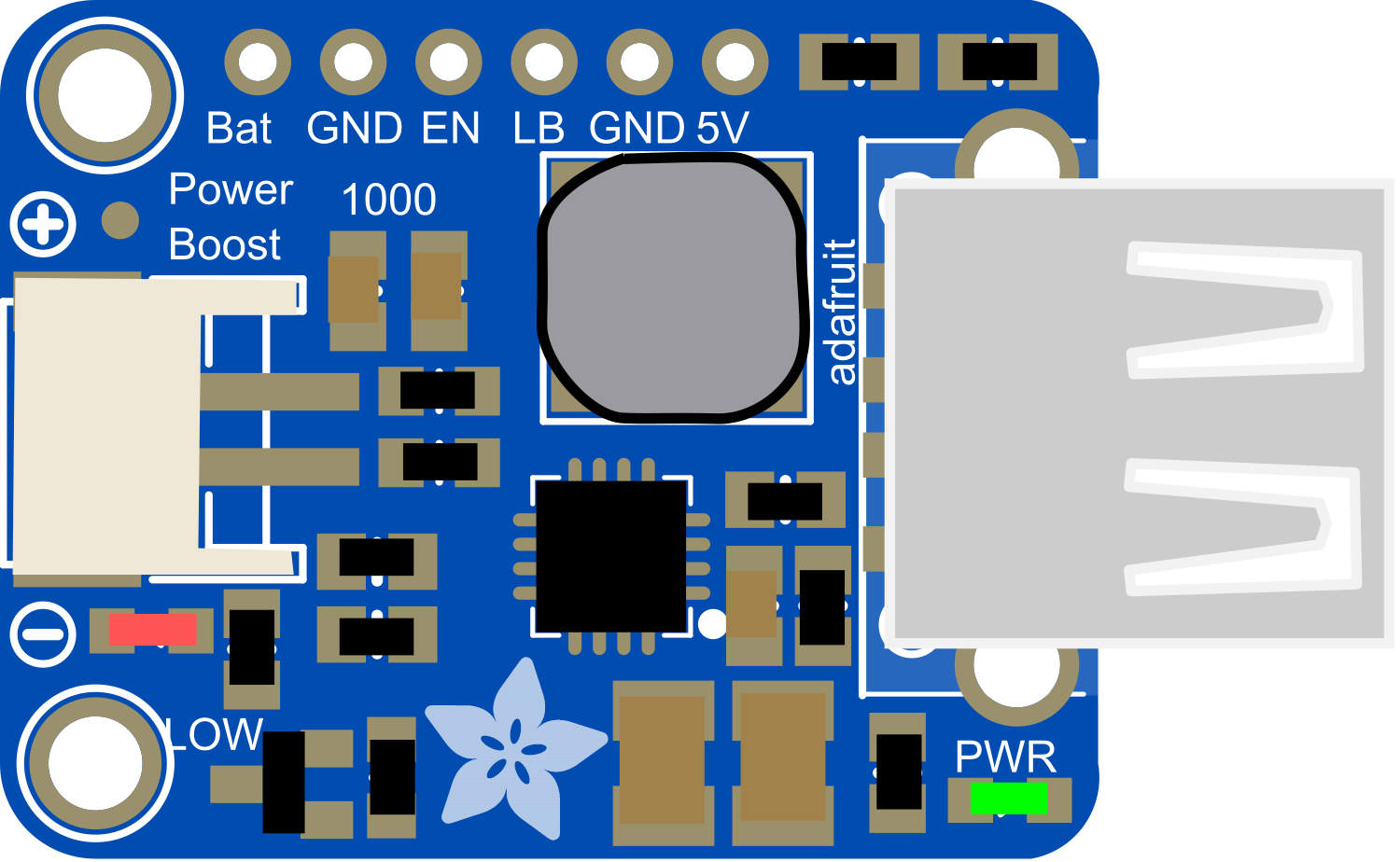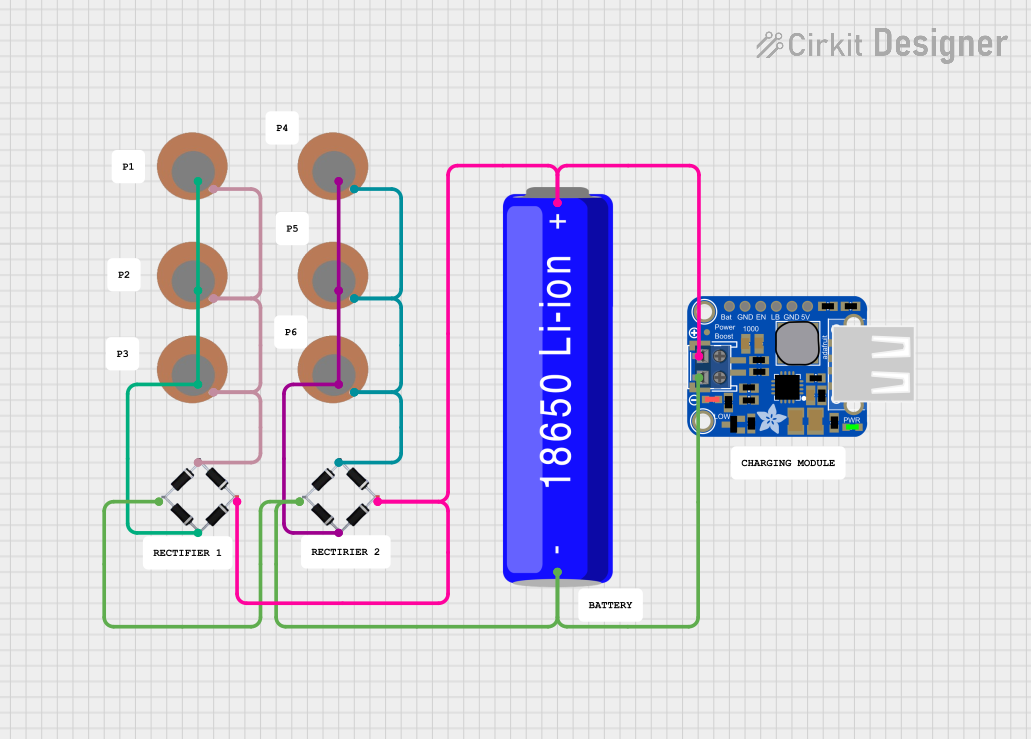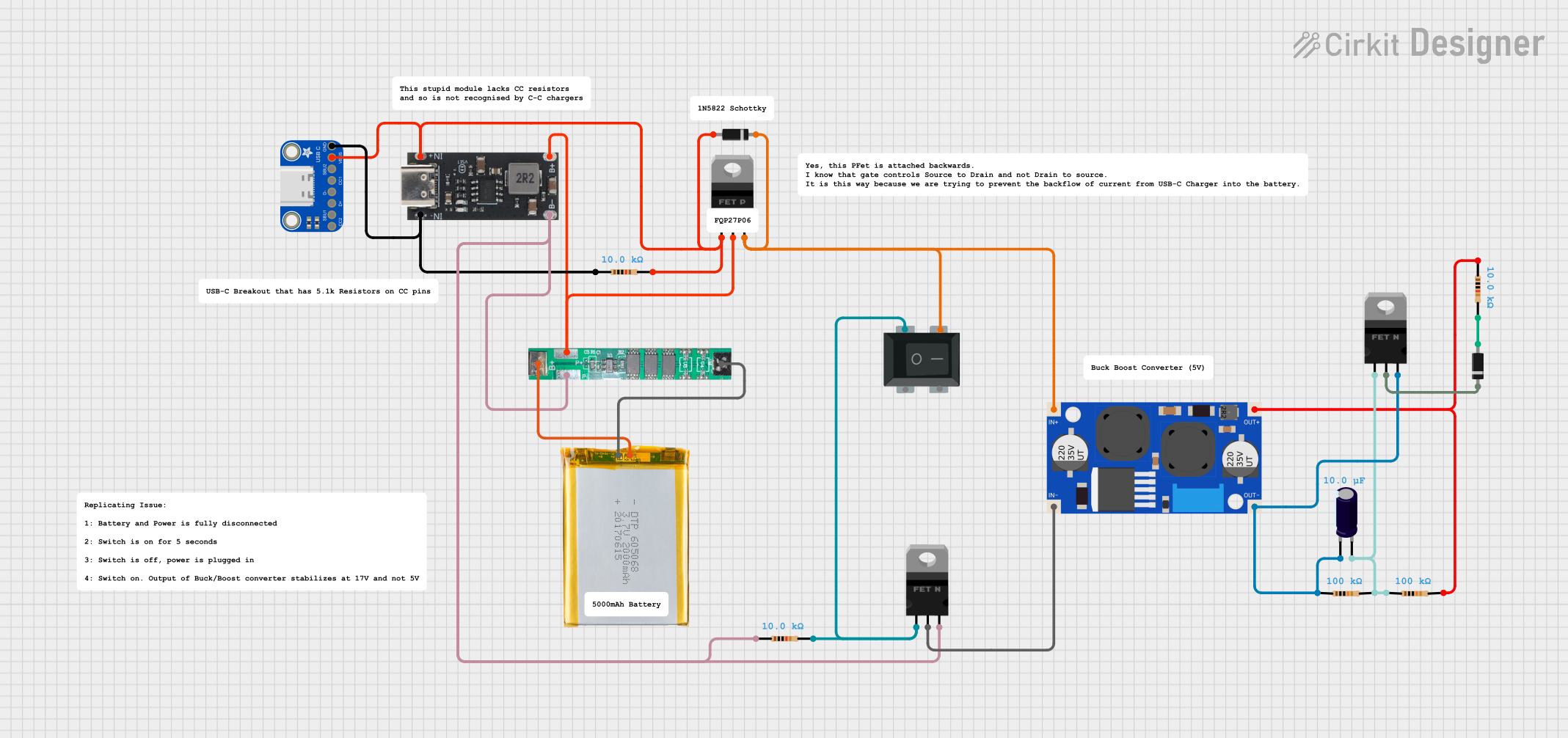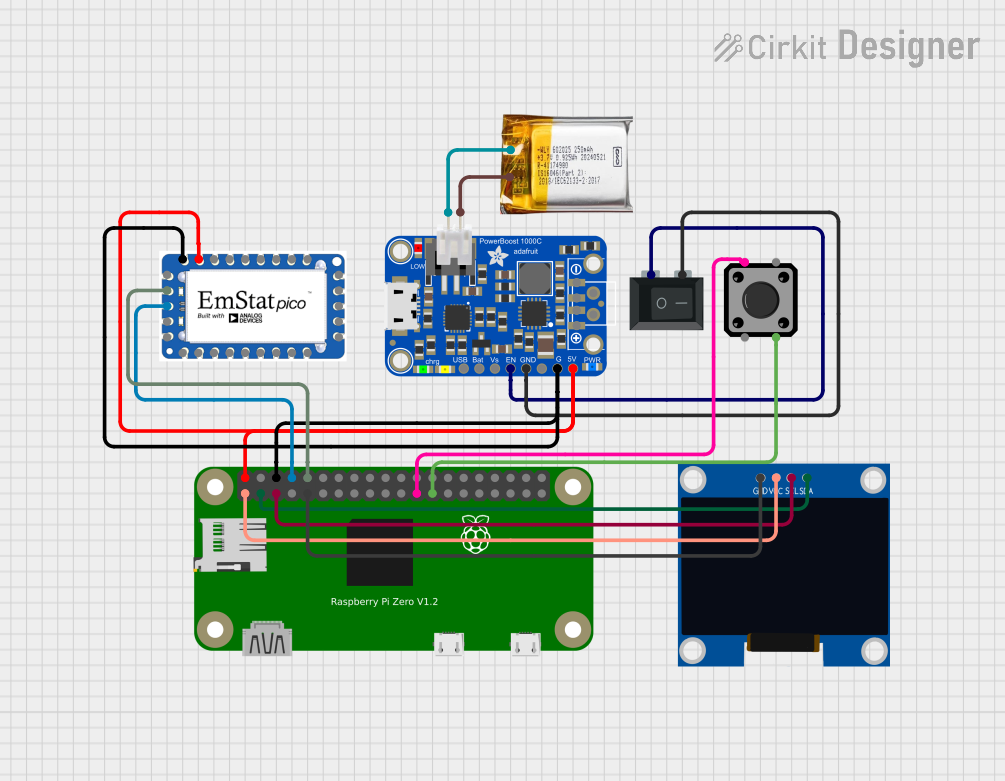
How to Use PowerBoost 1000 Basic JST USB: Examples, Pinouts, and Specs

 Design with PowerBoost 1000 Basic JST USB in Cirkit Designer
Design with PowerBoost 1000 Basic JST USB in Cirkit DesignerIntroduction
The PowerBoost 1000 Basic JST USB is a versatile and compact electronic component designed to provide a 5V power supply from a lower voltage source. This module is particularly useful for portable electronics, as it can boost the voltage from a battery to the level required by USB-powered devices. It is commonly used in DIY projects, wearables, and any application where a stable 5V output is needed from a rechargeable battery source.
Explore Projects Built with PowerBoost 1000 Basic JST USB

 Open Project in Cirkit Designer
Open Project in Cirkit Designer
 Open Project in Cirkit Designer
Open Project in Cirkit Designer
 Open Project in Cirkit Designer
Open Project in Cirkit Designer
 Open Project in Cirkit Designer
Open Project in Cirkit DesignerExplore Projects Built with PowerBoost 1000 Basic JST USB

 Open Project in Cirkit Designer
Open Project in Cirkit Designer
 Open Project in Cirkit Designer
Open Project in Cirkit Designer
 Open Project in Cirkit Designer
Open Project in Cirkit Designer
 Open Project in Cirkit Designer
Open Project in Cirkit DesignerCommon Applications and Use Cases
- Portable USB chargers
- Battery-powered electronics
- DIY USB power supplies
- Wearable devices
- Raspberry Pi and Arduino projects
Technical Specifications
Key Technical Details
- Input Voltage: 1.8V to 5.5V
- Output Voltage: 5V fixed
- Output Current: Up to 1A
- Efficiency: 90% typical at full load
- Quiescent Current: <5mA
- Switching Frequency: 1.2MHz
Pin Configuration and Descriptions
| Pin Name | Description |
|---|---|
| VIN | Input voltage (1.8V to 5.5V) |
| GND | Ground connection |
| 5V | Regulated output voltage (5V) |
| EN | Enable pin (pull low to disable) |
| BAT | Battery connection via JST connector |
Usage Instructions
How to Use the Component in a Circuit
Connecting the Battery:
- Connect your battery to the JST connector labeled 'BAT'. Ensure correct polarity.
Enabling the PowerBoost:
- The 'EN' pin can be left unconnected for normal operation. To disable the PowerBoost, connect 'EN' to ground.
Drawing Power:
- Connect your USB device or other electronics to the '5V' and 'GND' pins for power.
Important Considerations and Best Practices
- Battery Selection: Choose a battery that can supply the necessary current for your application.
- Heat Dissipation: Ensure adequate ventilation around the component, as it may generate heat during operation.
- Input Voltage: Do not exceed the recommended input voltage range to prevent damage.
- Output Load: Avoid drawing more than 1A from the output to maintain stable operation.
Troubleshooting and FAQs
Common Issues
- Insufficient Output Power: Ensure the input battery is fully charged and capable of delivering the required current.
- Overheating: If the module is overheating, reduce the load or improve heat dissipation.
- No Output Voltage: Check connections and ensure the 'EN' pin is not inadvertently grounded.
Solutions and Tips for Troubleshooting
- Check Connections: Verify all connections are secure and correctly polarized.
- Battery Charge: Ensure the battery is charged and functioning properly.
- Load Testing: Test the output with a different load to rule out issues with the connected device.
FAQs
Q: Can I use the PowerBoost 1000 Basic with a solar panel? A: Yes, as long as the solar panel's output voltage is within the 1.8V to 5.5V range.
Q: Is it possible to charge the battery through the PowerBoost 1000 Basic? A: No, this module does not include a charging circuit. It is designed to boost voltage only.
Q: What type of battery connector is used? A: A standard 2-pin JST-PH connector is used for battery connection.
Q: Can I connect multiple devices to the PowerBoost 1000 Basic? A: Yes, but ensure the total current draw does not exceed 1A.
Example Arduino Connection (Optional)
If you're using the PowerBoost 1000 Basic with an Arduino UNO to power it from a battery, here's a simple connection guide:
- Connect the battery to the JST connector on the PowerBoost.
- Connect the '5V' pin of the PowerBoost to the '5V' pin on the Arduino UNO.
- Connect the 'GND' pin of the PowerBoost to one of the 'GND' pins on the Arduino UNO.
// No specific code is required for the PowerBoost 1000 Basic as it is a power supply component.
// However, ensure your Arduino sketch does not draw more than 1A from the 5V pin.
Remember, the PowerBoost 1000 Basic is a power supply component and does not require code for operation. The above connection allows you to power your Arduino project from a battery through the PowerBoost.